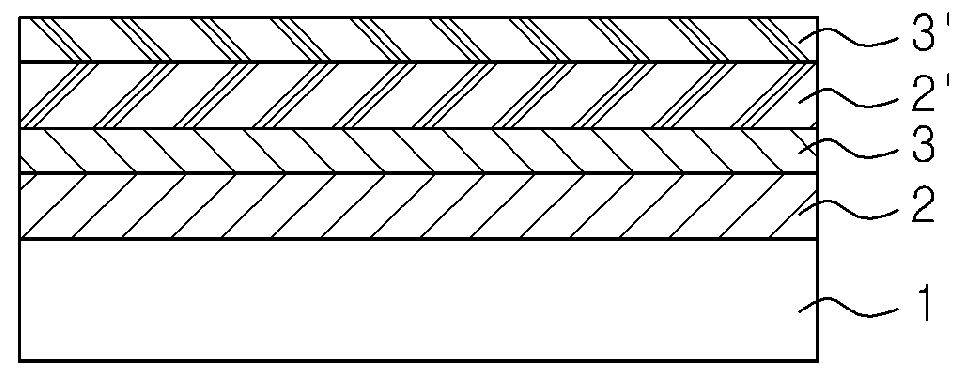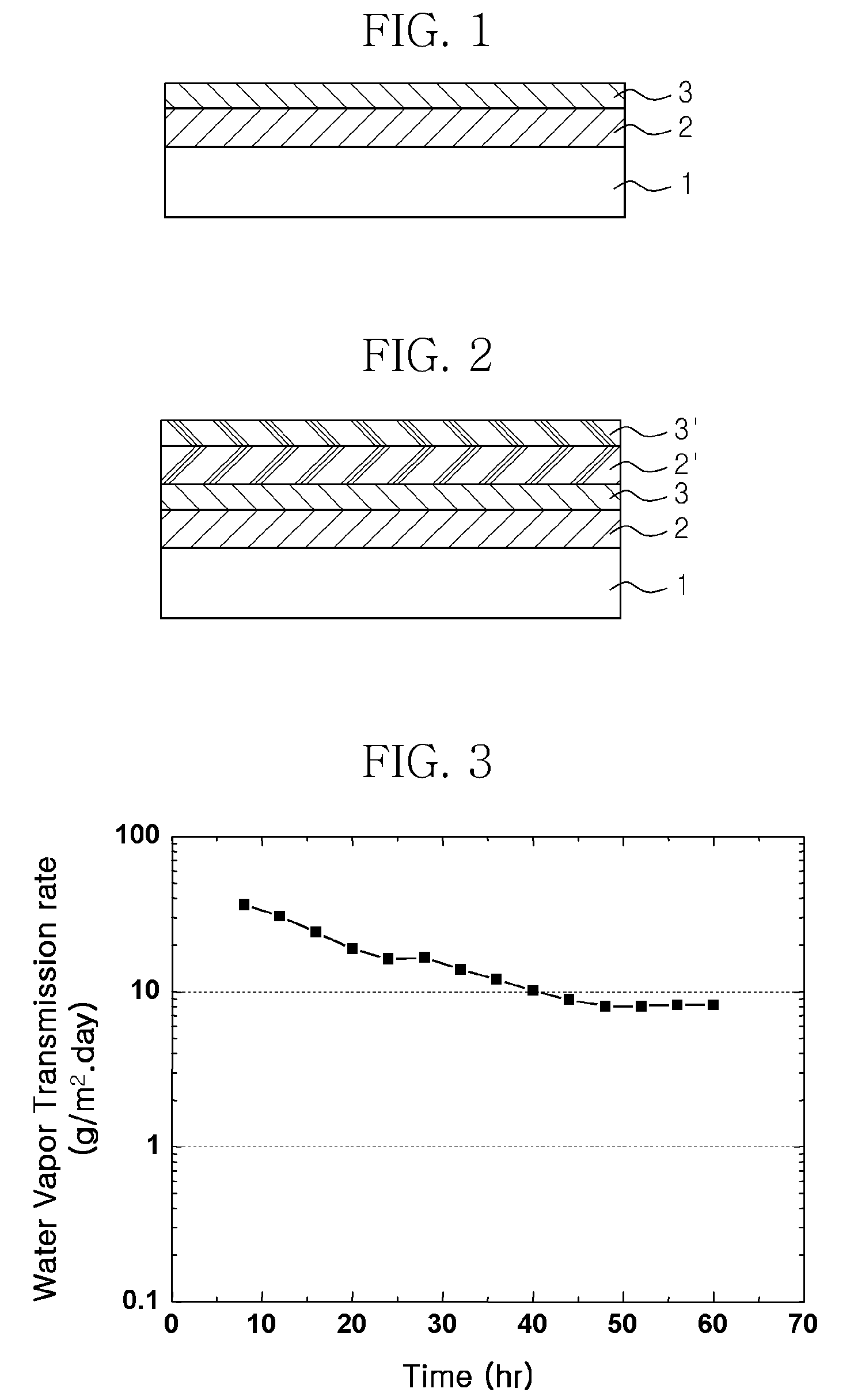Protective film and encapsulation material comprising the same
- Summary
- Abstract
- Description
- Claims
- Application Information
AI Technical Summary
Benefits of technology
Problems solved by technology
Method used
Image
Examples
example 1-1
Preparative Example 1-1
Synthesis of Monomer A-1
[0078]29.014 mmol (10.0 g) of 2,4,6,8-tetramethyl-2,4,6,8-tetravinylcyclotetrasiloxane and 0.164g of platinum(0)-1,3-divinyl-1,1,3,3-tetramethyldisiloxane complex (0.1 M solution in xylene, available as Cat. No. 47,951-9 from Aldrich) were put into a flask and diluted with 300 ml of diethyl ether. After cooling down to −78° C., 127.66 mmol (17.29 g) of trichlorosilane was slowly added to the reactor. The temperature of the reactor was gradually raised to room temperature. Thereafter, the mixture was allowed to react at room temperature for 20 hours. The reaction mixture was concentrated under reduced pressure (about 0.1 torr) to remove volatile substances. 10 ml of pentane was added to the concentrate, stirred for one hour, and the solution filtered through celite to obtain a colorless, clear solution. The pentane was removed under reduced pressure (about 0.1 torr) to give the cyclic siloxane compound [—Si(CH3) (CH2CH2SiCl3)O—]4 as a co...
example 1-2
Preparative Example 1-2
Preparation of Copolymer A-2 of Monomer A-1 and Methyltrimethoxysilane
[0080]37.86 mmol (5.158 g) of methyltrimethoxysilane and 3.79 mmol (3.162 g) of Monomer A-1 were put into a flask and diluted with 100 ml of tetrahydrofuran. Water and concentrated hydrochloric acid (35 wt % aqueous) were mixed in a volume ratio of 100:0.12 at −78° C. until the hydrochloric acid concentration became 0.0159 mmol. The aqueous hydrochloric acid solution was slowly added to the tetrahydrofuran solution, and then water was slowly added thereto until the total amount of the water was 529.67 mmol (9.534 g). Thereafter, the mixture was allowed to react while slowly warming to 70° C. The reaction was continued for 16 hours. After the reaction solution was transferred to a separatory funnel, 100 ml of diethyl ether was added to the separatory funnel. The solution was washed with water (100 ml×5). 5 g of anhydrous sodium sulfate was added to the separatory funnel, stirred at room tempe...
example 1-3
Preparative Example 1-3
Fractionation of Copolymer A-2 of Monomer A-1 and Methyltrimethoxysilane
[0081]5 g of Copolymer A-2 of Monomer A-1 and methyltrimethoxysilane, which was prepared in Preparative Example 1-2, was dissolved in 7 ml of acetone in a flask. The solution was passed through a syringe filter (pore size: 0.2 μm) to remove fine powder and other impurities. To the supernatant of the filtrate was slowly added 20 ml of water to obtain a precipitate as a white powder. The precipitate was collected from the acetone / water solution and dried under reduced pressure (0.1 torr) at 0-5° C., affording 3.5 g of a fractionated polymer (A-3).
Preparation of Multi-Functional Cyclic Siloxane Compound (Additive)
PUM
| Property | Measurement | Unit |
|---|---|---|
| Temperature | aaaaa | aaaaa |
| Adhesion strength | aaaaa | aaaaa |
| Flexibility | aaaaa | aaaaa |
Abstract
Description
Claims
Application Information
 Login to View More
Login to View More - R&D
- Intellectual Property
- Life Sciences
- Materials
- Tech Scout
- Unparalleled Data Quality
- Higher Quality Content
- 60% Fewer Hallucinations
Browse by: Latest US Patents, China's latest patents, Technical Efficacy Thesaurus, Application Domain, Technology Topic, Popular Technical Reports.
© 2025 PatSnap. All rights reserved.Legal|Privacy policy|Modern Slavery Act Transparency Statement|Sitemap|About US| Contact US: help@patsnap.com



